Recent Developments in Indoor Air Quality Policy
ELI tracks policy developments nationwide related to indoor air quality (IAQ) in schools, homes, and other buildings. Here, we highlight some of the notable recent developments in enacted IAQ laws and regulations around the country. The focus is at the state level, but significant federal and local policies may be included as well.
Indoor Air Quality is a broad subject, encompassing many different pollutant sources, activities, and building types. This page provides only a sampling of recent developments in IAQ laws and regulations. Other ELI materials provide and update more extensive listings of state IAQ policies on some issues – see our Database of State IAQ Laws for a broad collection of IAQ laws, our Topics in School Environmental Health resource for state laws on nine different school IAQ topics, and our Policy Briefs covering several evolving IAQ issues. And you can find our recent blog post here.
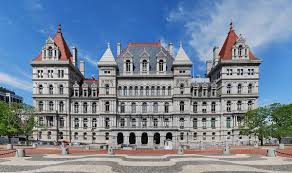
New York to Require Cleaning Product Manufacturers to Disclose Ingredients
June 2018 - The N.Y. Department of Environmental Conservation (DEC) has issued a new policy detailing requirements for manufacturers of household cleaning products to disclose information to DEC about intentionally-added ingredients in the products, including fragrances, byproducts, and impurities. Companies must also post the information on their website, along with: a description of information being withheld as confidential business information; studies the company has conducted on health and environmental effects of the products; and a toll-free number for consumers to get more information. The disclosure requirements – with effective dates ranging from July 1, 2019 to January 1, 2023 – implement long-standing state law and regulations that direct manufacturers of cleaning products to submit ingredient information about their products as required by the DEC. N.Y. Envl. Conservation Law 35-0107; 6 N.Y. Code Rules & Regs. 659.6.
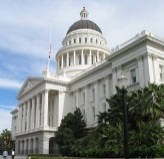 California to Require Increased Filtration in New Home Ventilation Systems
California to Require Increased Filtration in New Home Ventilation Systems
May 2018 – The California Energy Commission approved the state's 2019 Building Energy Efficiency Standards, to take effect January 1, 2020. While the new standards made headlines for requiring solar photovoltaic systrems for new homes, they are also noteworthy for an indoor air quality first -- a requirement that ventilation systems in both high rise and low rise residential buildings have air filters with a minimum MERV 13 efficiency rating (2019 Title 24, Part 6, Sections 120.1(b), 150.0(m)).
 U.S. EPA Formaldehyde Rule to Take Effect June 1, 2018
U.S. EPA Formaldehyde Rule to Take Effect June 1, 2018
March 2018 - A federal District Court rejected a U.S. EPA rule that sought to delay compliance deadlines for the agency’s new national formaldehyde emissions standards until December 2018. In March, the Court set a June 1, 2018 compliance deadline for the EPA formaldehyde rule, which implements a 2010 law requiring EPA to adopt standards for composite wood products aligned with those already adopted by California.
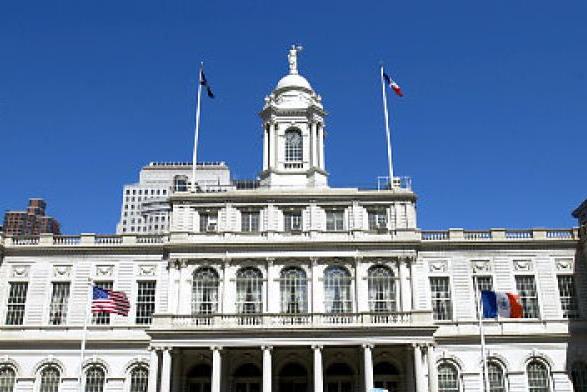 New York City Requires Landlords to Address Mold and Pest Infestation
New York City Requires Landlords to Address Mold and Pest Infestation
January 2018 - New York City enacted the Asthma Free Housing Act (2018/055) amending the city’s housing maintenance code to require private landlords to prevent and remediate indoor allergen hazards, including mold and pest infestation. Among other things, the law requires use of IPM practices and specified mold remediation practices. The law also directs the city to incorporate mold and pest infestation in its housing code inspections, train enforcement staff, and establish procedures for implementing the law. (Related ELI Resources: Policy Brief; Research Report.)

Colorado Launches Program to Help Low Income Families Reduce Radon Levels
November 2017 – Colorado published guidance for its new Low Income Radon Mitigation Assistance Program. A 2016 state law (Co. Rev. Stat. §25-11-114) created the program, to be funded by the state hazardous substance response fund. Agency rules (6 Co. Code Regs. 1007-1 Part 21) set eligibility criteria, application procedures, and contractor qualifications for receiving funding for radon mitigation system installation and post-installation testing in owner-occupied homes.
 California to Require Chemical Ingredient Disclosure for Cleaning Products
California to Require Chemical Ingredient Disclosure for Cleaning Products
October 2017 – California enacted the Cleaning Product Right to Know Act requiring manufacturers of specified types of cleaning products sold in the state to disclose certain chemicals used in the products, and requiring employers to provide that information to their employees. The law lists the information that must be disclosed, both on the product label (by 2021) and the product website (by 2020). (Related ELI Resources: Policy Brief, Topics in School Env. Health.)
 California Directs Funding to New Woodsmoke Reduction Program
California Directs Funding to New Woodsmoke Reduction Program
October 2017 – California enacted a law (Ca. SB 563) establishing a Woodsmoke Reduction Program to incentivize voluntary replacement of old, uncertified wood-burning stoves with cleaner burning, more efficient models. Funding will be provided based in part on the location of the home and household income. Funded through the state Greenhouse Gas Reduction Fund, the program aims to distribute 75% of its funding to households in disadvantaged and low-income communities.
 Rhode Island and Maine Ban Flame Retardants in Residential Furniture
Rhode Island and Maine Ban Flame Retardants in Residential Furniture
October 2017 – Rhode Island enacted a law (R.I. Pub. Law 2017, ch 380) prohibiting the manufacture, sale, or distribution of any residential upholstered furniture and bedding that contains 100 ppm or greater of any organohalogen flame-retardant chemical. The ban takes effect July 1, 2019, and manufacturers must notify sellers in the state about the ban prior to that date. The law directs the state health agency to enforce the ban and establishes civil penalties for violations.
 August 2017 – Maine also enacted a law (38 Me. Rev. Stat. §1609-A) prohibiting the sale or distribution of new residential upholstered furniture made with materials containing more than 0.1% of a flame-retardant chemical or a mixture including a flame-retardant chemical. The prohibition takes effect January 1, 2019, with a sell-through provision. The state is required to develop regulations to implement the law.
August 2017 – Maine also enacted a law (38 Me. Rev. Stat. §1609-A) prohibiting the sale or distribution of new residential upholstered furniture made with materials containing more than 0.1% of a flame-retardant chemical or a mixture including a flame-retardant chemical. The prohibition takes effect January 1, 2019, with a sell-through provision. The state is required to develop regulations to implement the law.
 Oregon Requires Schools to Adopt Plans for Addressing Environmental Hazards
Oregon Requires Schools to Adopt Plans for Addressing Environmental Hazards
August 2017 – Oregon amended its Education Code to require schools to adopt a Healthy and Safe Schools Plan to address, at a minimum, lead, radon, asbestos, IPM, and CO. The law (Or. SB 1062) requires the state to develop a model plan, plus information on substances that may pose health risks. Creates a Healthy Schools Facilities Fund to assist schools financially in implementing the plan. The law builds on a state education rule that initially directed schools to develop the plans. (Related ELI Resources: Topics in School Env. Health.)
 Delaware to Provide Information to Help Schools Improve IEQ
Delaware to Provide Information to Help Schools Improve IEQ
July 2017 – Noting recent concerns over school IEQ, the Delaware legislature acted to require the creation of a Healthy Schools Indoor Environment Portal on the state health agency website. The new education law (14 De. Code §§4301-4306) directs the state health and education agencies to collaborate with school districts to identify information and technical resources for improving IEQ, and directs schools to display publicly the contact information for the state Division of Public Health. (Related ELI Resources: Topics in School Env. Health.)
 California Finalizes Rule Listing First Priority Product under Green Chemistry Law
California Finalizes Rule Listing First Priority Product under Green Chemistry Law
July 2017 – The California Dept. of Toxic Substances Control finalized a rule (22 Cal. Code Regs. §69511) listing children's foam-padded sleeping products with TDCPP or TCEP flame retardants as a Priority Product and requiring manufacturers to submit a Preliminary Alternatives Analysis Report. The rule follows a 2008 state law and subsequent regulations that set a framework for the state to identify, prioritize, evaluate and regulate chemicals of concern in consumer products. (Related ELI Resources: Policy Brief.)
 New Jersey Requires CO Detectors in Existing Buildings
New Jersey Requires CO Detectors in Existing Buildings
June 2017 – New Jersey‘s Fire Safety Code (N.J. Admin. Code § 5:70- 4.9) requires, as of September 3, 2017, the installation of carbon monoxide (CO) detection equipment in all existing buildings, including residential and educational facilities, that have fuel-burning appliances or attached garages. The code establishes criteria for the types of devices that may be used and standards for installation and maintenance. (Related ELI Resources: Topics in School Env’l. Health.)
 Nebraska to Develop Standards for Radon Resistant Buildings
Nebraska to Develop Standards for Radon Resistant Buildings
April 2017 - Nebraska enacted the Radon Resistant New Construction Act (LB9). The Act creates a special Task Force to develop minimum standards for radon resistant new construction by spring 2018. “New construction” is defined to include original construction of residential, commercial, industrial, medical, and educational buildings. The legislature intends to use the Task Force recommendations to set statewide standards in 2019. (Related ELI Resource: Policy Brief.)
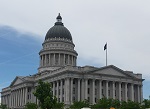 Utah Joins NY in Requiring Existing Nail Salons to Have Improved Ventilation
Utah Joins NY in Requiring Existing Nail Salons to Have Improved Ventilation
March 2017 – Utah enacted a law adopting the 2015 International Mechanical Code (IMC), with amendments to the IMC provisions governing ventilation in nail salons. The law (Ut. Code §15A-3-402) includes a modified source capture system requirement for all new and existing nail salon manicure stations that file or shape acrylic nails. Existing salons must comply by July 2020. (Related ELI Resource: Policy Brief.)
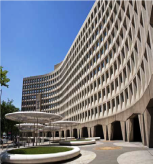 HUD Requires Smoke Free Policies in Public Housing
HUD Requires Smoke Free Policies in Public Housing
February 2017 – HUD’s final rule took effect, requiring all Public Housing Authorities (PHAs) to implement a smoke-free policy by July 31, 2018. The rule applies to all public housing units, interior areas, and outdoor areas within 25 feet of the housing. HUD also published a Guidebook to provide PHAs a roadmap for adopting a smoke-free policy. (Related ELI Resource: Policy Brief.)
 D.C. Government to Assess Public Buildings for Environmental Risk
D.C. Government to Assess Public Buildings for Environmental Risk
January 2017 – The District of Columbia enacted the Healthy Public Buildings Assessment Act (DC Law 21-237). The law requires the D.C. Dept. of General Services to assess D.C.-owned buildings (including schools) for at least the following potential IAQ risks: mold, ventilation, lead, asbestos, CO, and radon. The agency must set inspection and remediation protocols and post online the results of assessments and remediation activities. (Related ELI Resource: Topics in School Env’l. Health.)